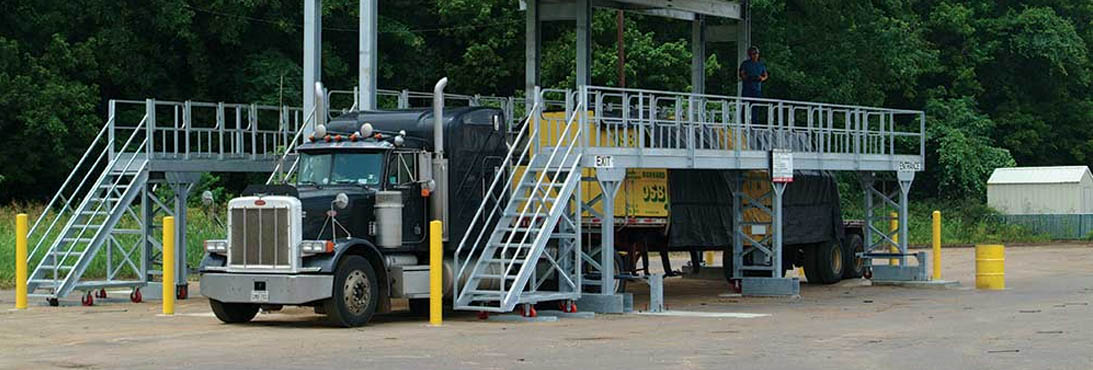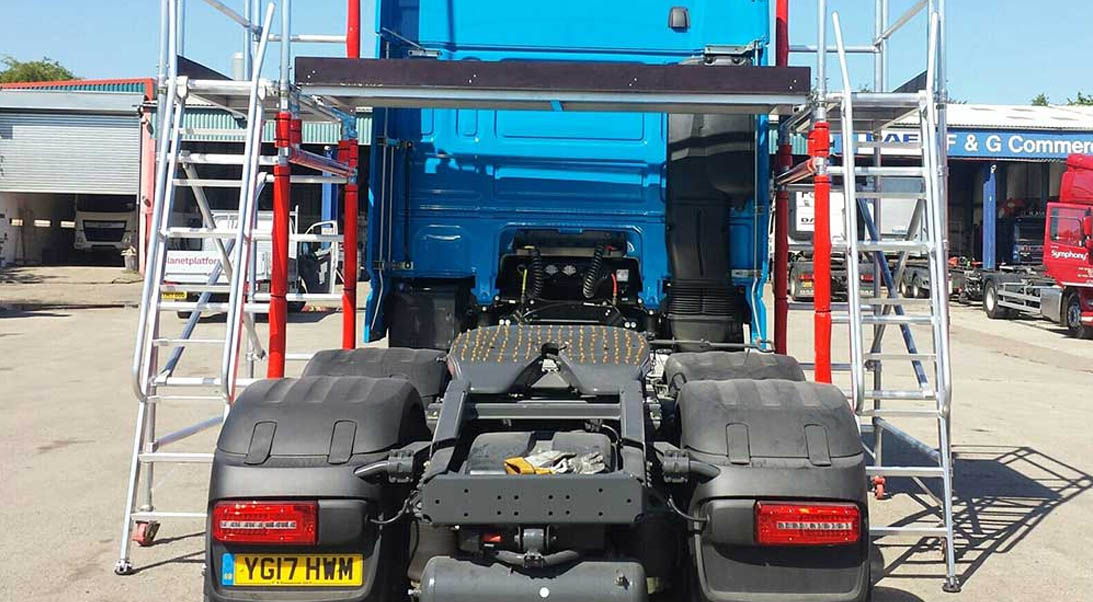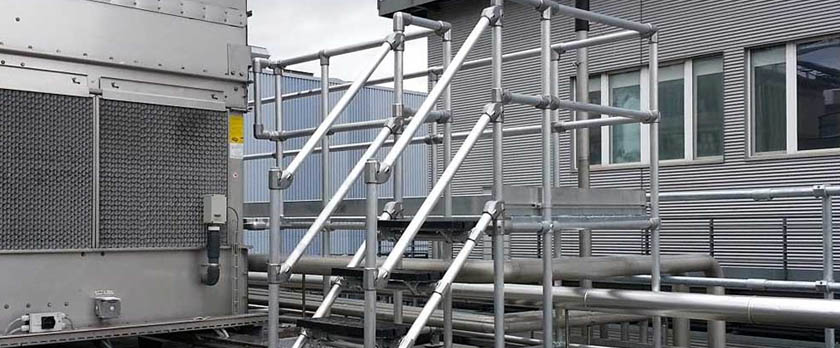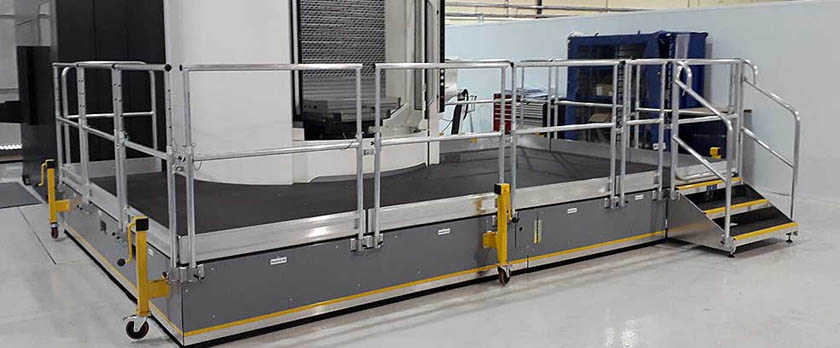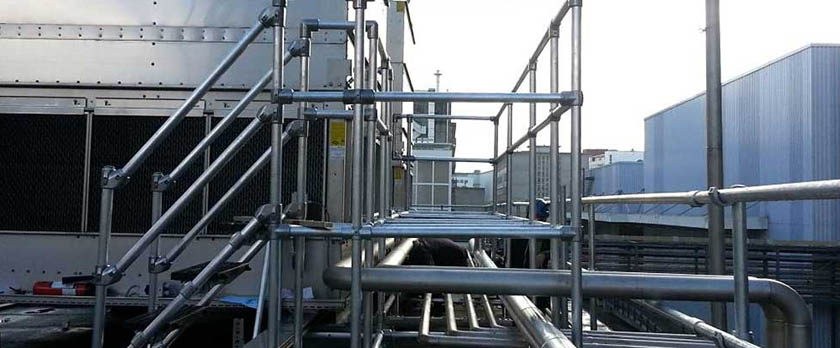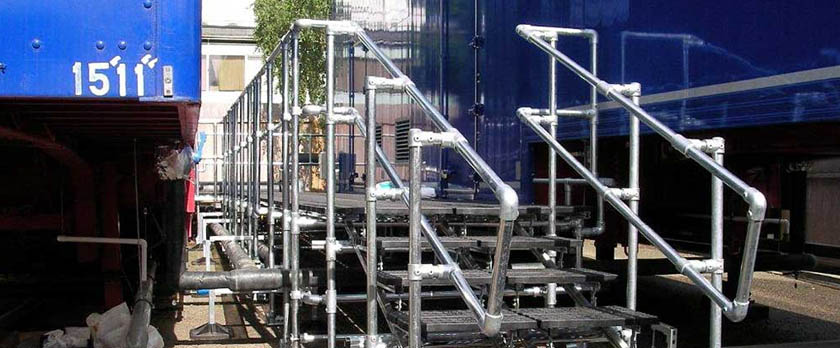Truck access platforms are specifically designed from durable and robust materials like high-strength aluminum so that they can be positioned alongside trucks for the manual loading and unloading of the deck.
Many plants and processing facilities often witness fall hazards among their employees. The safety risks in these environments are endless, as the workers are continuously interacting with hazardous chemicals, maintaining vehicles, and loading and unloading truck components.
Choosing the best truck access platforms can help a company increase the safety and productivity of its workers, as well as comply with the regulations stated by the Occupational Safety & Health Administration.
There are many benefits of truck access platforms for the workers as they are kept safe from falling off by protecting them with handrails and self-closing gates. A perforated safety tread can provide maximum grip even in wet and greasy conditions.
What Are Truck Access Platforms?
Truck access platforms are specialized structures that can help workers deal with truckloads, inspection, and manipulating truck operations and components such as cryogenic tanks.
These structures contain accessible stair systems, handrail systems, height-adjusted maintenance platforms and safety enclosures that can provide excellent accessibility and fall prevention for the workers.
To ensure the durability and resistance of these platforms, they are typically made from high-strength materials such as aluminum and steel so that they can provide a long-lasting and stable service to the companies.
In the context of using truck access platforms for chemical plants and facilities, there are several benefits that investing in these durable structures can bring to the company.
Protection From Unnecessary Accidents
Accidents and mishaps are inevitable but highly preventable. If companies are proactive and vigilant about their worker’s safety, they can ensure that fall hazards are properly identified and prevented.
Workers at chemical processing facilities are responsible for moving chemicals in and out via tank trucks. However, there are many risks associated with the loading and unloading hatches of such tanker trucks. If there are no proper maintenance stands, then there is a high chance that workers can slip or fall from the tanker as there is no fall protection in place.
Sometimes a side access ladder is employed for this activity, but even then, the risk of slipping and falling is not eliminated without proper safety tread that is anti-slip and self-draining.
Protection of Truck Components From Contamination
These maintenance platforms are not just important to protect the employees of a facility but also to prevent potential contamination in the tank components. Some chemicals need to be covered and protected from external factors like rain and sunlight, and truck access platforms can help employees ensure that the products retain their quality until they are safely delivered.
Build Workers’ Trust and Improve Productivity
When a company is protective of its worker’s life and health safety, the workers can become more productive without any extra stress. However, when workplace injuries dramatically decrease in a business, the employees may not be willing to risk their life and well-being to complete their jobs.
In this case, truck access platforms can ensure their safety by decreasing the chances of fall injuries and driving the employees to get more work done.
What Purpose Truck Access Platforms Can Achieve?
Truck access platforms are needed for a number of purposes, such as;
Truck Cleaning and Maintenance
Trucks and tanks are sturdy structures that need washing and cleaning regularly so that any potentially hazardous residues are eliminated, thus preventing contamination in the truck components. Truck operators can be made sure that their trucks are in good condition to carry other loads.
Preventative Maintenance
Preventative maintenance is essential to eliminate any hazardous gasses and contaminants that can remain in tanks. Truck access platforms can help workers vacuum and pump these gasses and perform other maintenance operations in an efficient manner without any chances of falls or injuries.
Different Truck Access Platforms for Different Purposes
Truck access platforms can be specialized for different load needs. For example, commercial platforms are available for specific areas of industry, such as commercial aviation platforms, food and beverage industries, manufacturing facilities, distribution warehousing, train platforms, and as vehicle access platforms.
What Are Some Different Work Platforms Provided by FlexDecks?
FlexDecks specializes in designing innovative maintenance platforms for different companies whose employees are highly exposed to workplace falls and hazards.
We create maintenance platforms that are different in their styles and needs, such as;
Mobile Work Platforms
These work platforms are portable and allow access to difficult-to-reach areas so that employees can work in a safe and stable environment. With a secure work deck and railing system, the mobile stair system can allow access to places where permanent platforms like ladders or towers are not applicable.
Fixed Access Platforms
Fixed access platforms are constructed according to the specific need of workplaces which require workers to flow at great heights. They are safer and more stable than portable access platforms and ladders so that workers are protected from any chances of slipping and falling from great heights.
Adjustable Work Platforms
These types of platforms are designed keeping in mind the functional needs of an easy-to-move and set-up maintenance platform. These work platforms ensure maximum safety and productivity in many repair and maintenance tasks.
How to Ensure That the Truck Access Platforms Are Safe?
To ensure the safety and guarantee of truck access platforms, make sure that their design and functionality matches the need of a company and its operations.
The nature of transported goods and the safety risks they impose on workers is also an important criterion to consider. Furthermore, inspect the site features and determine what impact they will have on the access platforms and workers’ safety. Companies should also adopt safety measures that can avoid unnecessary risks and improve the productivity of their employees.
FlexDecks is a reliable maintenance stand-providing company, as we believe that responding to clients’ needs with the sturdiest and most durable truck access platforms is the key to our respectable reputation in this industry.

